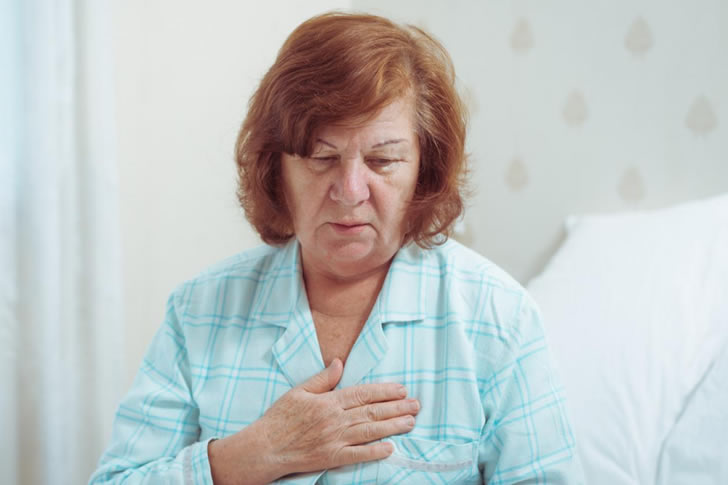Key Symptoms of Breast Cancer in Older Adults
Breast cancer is a significant health concern, particularly for elderly women. Recognizing the signs early can be crucial for timely treatment and better outcomes.

Why Early Detection is Vital
Early detection of breast cancer in elderly individuals is critical because it can lead to more effective treatment options and improved survival rates. Older adults might experience different symptoms or overlook them due to other health issues, making awareness especially important.
Common Signs and Symptoms of Breast Cancer in the Elderly
Breast cancer symptoms can vary widely, but here are the most common signs to watch for:
- Lump in the Breast or Underarm: A new lump or mass is often the first noticeable symptom. It can be painless or tender to touch.
- Changes in Breast Size or Shape: Any sudden alteration in the size or shape of the breast should be evaluated.
- Skin Changes: Look for dimpling, puckering, or redness on the breast skin.
- Nipple Changes: This includes inversion, discharge (other than breast milk), or any unusual pain.
- Swelling or Thickening: Not just in the breast but also in the armpit area.
- Persistent Pain: Any constant pain in the breast or nipple area should be checked.
Risk Factors for Breast Cancer in the Elderly
Several factors can increase the risk of breast cancer in older adults:
- Age: The risk increases with age, particularly after 65.
- Family History: A family history of breast cancer can significantly elevate risk.
- Genetic Mutations: Mutations in genes such as BRCA1 and BRCA2.
- Hormone Replacement Therapy: Long-term use can increase risk.
- Late Menopause: Women who experience menopause after age 55 have a higher risk.
Q&A: Understanding Breast Cancer in the Elderly
Q: How often should elderly women get screened for breast cancer? A: The frequency of screening can vary based on individual risk factors. Generally, women aged 50 to 74 should have a mammogram every two years. Those with higher risk factors may need more frequent screenings.
Q: Are breast cancer symptoms different in elderly women? A: Symptoms in elderly women can be more subtle and may be mistaken for other health issues. It’s important to be vigilant about any changes in breast health.
Q: Can lifestyle changes reduce the risk of breast cancer? A: Yes, maintaining a healthy diet, regular exercise, limiting alcohol intake, and avoiding smoking can help reduce risk.
Q: Is breast cancer treatment different for older adults? A: Treatment is tailored to the individual’s overall health, cancer stage, and personal preferences. Options may include surgery, radiation, chemotherapy, and hormonal therapy.
Q: How does family history affect breast cancer risk? A: A strong family history of breast cancer, especially with first-degree relatives, can increase risk significantly. Genetic counseling may be recommended for these individuals.
Statistical Insights: Breast Cancer in Elderly Women
- Incidence: Approximately 1 in 8 women in the U.S. will develop breast cancer in their lifetime. Incidence rates increase significantly with age.
- Survival Rates: Early-stage breast cancer has a 5-year survival rate of nearly 100%. However, late-stage detection can reduce this rate dramatically.
- Age Factor: Women aged 65 and older account for about 50% of all new breast cancer cases.
Chart: Top 10 Features to Consider in Breast Cancer Screening and Detection
| Feature | Description |
|---|---|
| Screening Frequency | Regular mammograms every 1-2 years based on risk |
| Imaging Technology | Advanced tools like digital mammography and MRI |
| Biopsy Methods | Core needle, fine needle, and surgical biopsies |
| Genetic Testing | BRCA1/BRCA2 testing for high-risk individuals |
| Risk Assessment | Evaluating family history and lifestyle factors |
| Patient Support | Access to counseling and support groups |
| Treatment Options | Tailored treatments including surgery and medication |
| Follow-Up Care | Regular check-ups post-treatment for early detection |
| Educational Resources | Access to information on breast health and cancer |
| Insurance Coverage | Understanding what’s covered under health plans |
Practical Tips for Elderly Women
- Self-Exams: Regular self-exams can help in early detection of any unusual changes.
- Regular Screenings: Do not skip scheduled mammograms, even if you feel healthy.
- Healthy Lifestyle: Maintain a balanced diet, stay active, and limit alcohol consumption.
- Stay Informed: Keep up with the latest information and guidelines on breast cancer.
Conclusion
Breast cancer in elderly women can be effectively managed with early detection and appropriate treatment. Understanding the signs and maintaining regular screenings are vital steps in safeguarding health. By being vigilant and informed, elderly women can take proactive measures to protect themselves against this disease.
References







Recent Comments